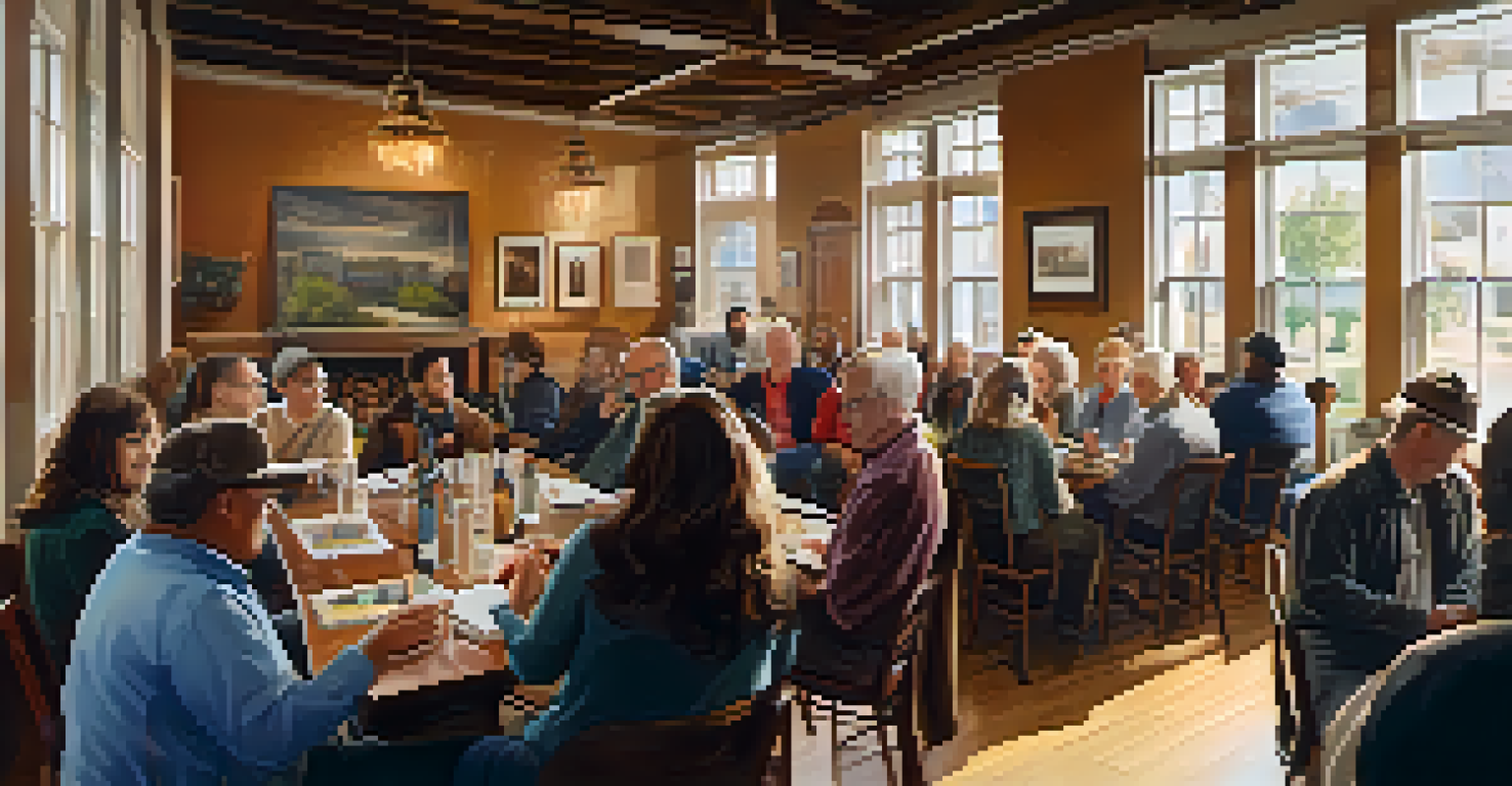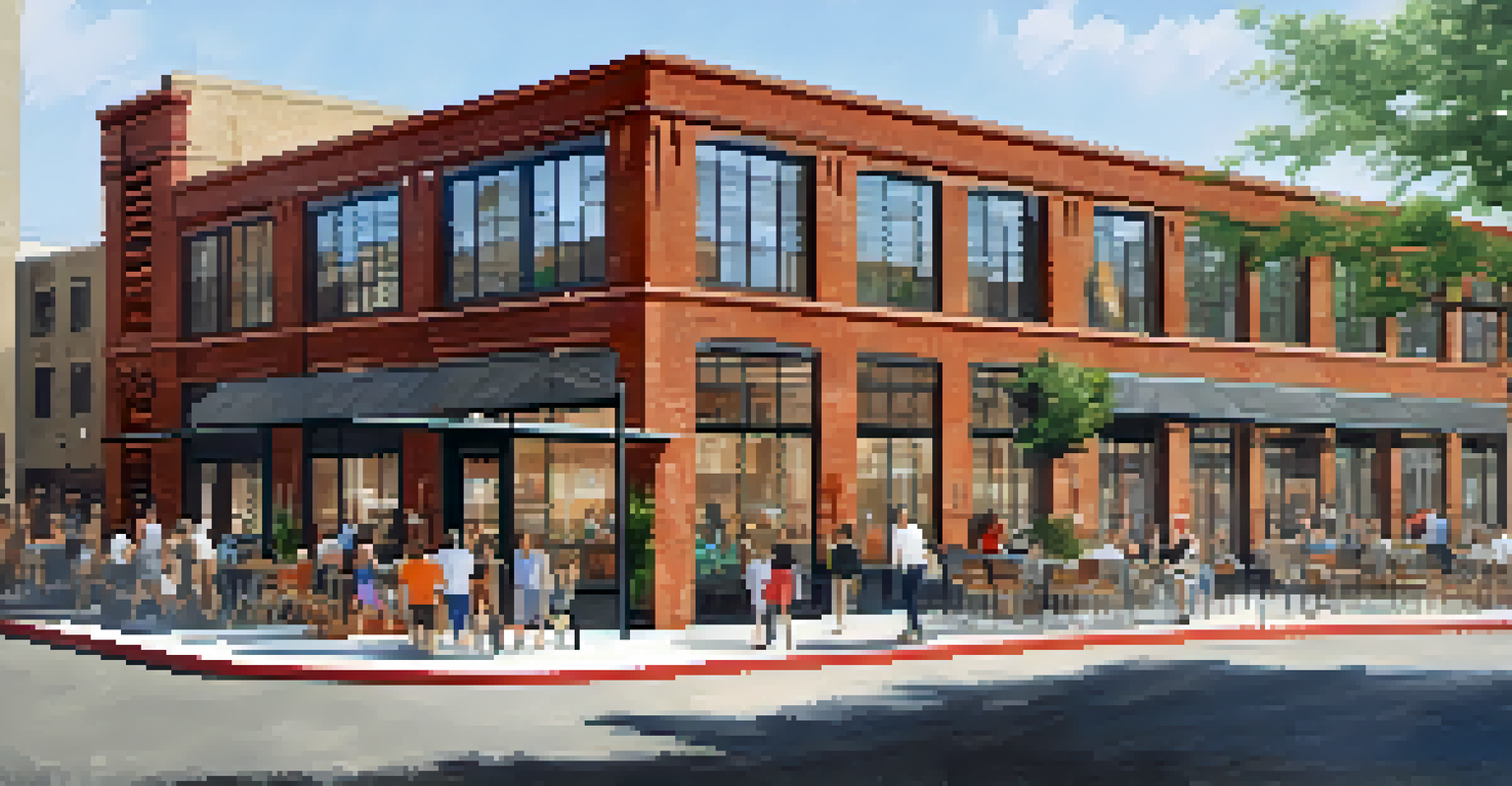The Future of Austin's Historical Preservation Efforts

The Importance of Historical Preservation in Austin
Historical preservation plays a vital role in maintaining Austin's unique character. As the city continues to grow and attract new residents, preserving its rich history becomes increasingly important. These efforts not only protect architectural gems but also foster a sense of community and identity among residents.
Preservation of our heritage is not a luxury, it is a necessity for our community's identity and future.
Austin's history is woven into its neighborhoods, from the iconic Texas State Capitol to the charming bungalows of Hyde Park. Each building tells a story, reflecting the diverse cultures and experiences that have shaped the city. By valuing historical preservation, Austin honors these narratives while providing a tangible connection to the past.
Moreover, preserving historical sites can boost local economies through tourism and community events. People are drawn to cities with rich histories, and by showcasing these treasures, Austin can enhance its appeal while supporting local businesses.
Current Challenges Facing Preservation Efforts
Despite the importance of historical preservation, Austin faces several challenges. Rapid urbanization and population growth often lead to the demolition of older buildings to make way for new developments. This trend can threaten the very fabric of the city, as unique architectural styles and historic sites are lost.

Additionally, differing opinions on what should be preserved complicate decision-making. Stakeholders, including developers, city officials, and community members, often have conflicting interests. This can result in heated debates about which structures deserve protection and which can be replaced.
Preservation Boosts Community Identity
Historical preservation fosters a sense of community and identity among Austin residents by maintaining connections to the city's diverse past.
Funding is another significant challenge for preservation efforts. Many historical sites require extensive maintenance and restoration, and securing the necessary financial resources can be difficult. Without adequate support, important pieces of Austin's history may fall into disrepair or be lost altogether.
Innovative Approaches to Preservation
To address these challenges, Austin is exploring innovative approaches to preservation. One such method involves adaptive reuse, where old buildings are repurposed for new functions while retaining their historical elements. This not only preserves the character of a neighborhood but also meets the demand for modern spaces.
History is not a burden on the memory but an illumination of the soul.
For example, transforming a historic warehouse into a vibrant mixed-use development allows the city to maintain its heritage while providing new opportunities for businesses and residents. This approach can serve as a win-win, balancing growth with preservation.
Community engagement is also playing a crucial role in these innovative strategies. By involving residents in the decision-making process, the city can ensure that preservation efforts align with local values and needs. This collaborative approach fosters a sense of ownership and pride in the community's history.
The Role of Technology in Preservation Efforts
Technology is revolutionizing historical preservation in Austin, making it easier to document and share the city's heritage. Digital tools like 3D scanning and virtual reality can create detailed records of historical sites, allowing for accurate restorations and virtual tours. This accessibility helps raise awareness and appreciation for Austin's history.
Moreover, online platforms enable community members to contribute to preservation efforts. Crowdsourcing initiatives allow residents to share stories, photographs, and historical documents, creating a rich tapestry of the city's past. This collective knowledge not only strengthens community ties but also enhances preservation efforts.
Challenges Threaten Preservation Efforts
Rapid urbanization, differing opinions, and funding issues pose significant challenges to preserving Austin's historical sites.
Additionally, social media serves as a powerful tool for advocacy. Preservationists can use these platforms to rally support for threatened sites, share updates on restoration projects, and engage with a broader audience. Through technology, Austin's historical preservation efforts can reach new heights.
Community Involvement and Advocacy
Community involvement is essential for successful historical preservation in Austin. Local advocacy groups, such as the Austin Heritage Society, work tirelessly to raise awareness about the importance of preserving the city's unique architecture and cultural sites. Their efforts often lead to grassroots campaigns that mobilize residents to take action.
Public meetings and workshops provide platforms for community members to voice their opinions and contribute to preservation discussions. These gatherings foster a sense of unity and empower residents to become active participants in shaping their neighborhoods. When people feel connected to their history, they are more likely to advocate for its protection.
Moreover, partnerships between the city, non-profit organizations, and residents can lead to successful preservation initiatives. Collaborative projects can pool resources and expertise, ensuring that restoration efforts are both effective and sustainable. This teamwork helps create a shared vision for Austin's historic landscape.
Legislation and Policy Changes
Legislation plays a crucial role in shaping historical preservation efforts in Austin. Policies that protect historically significant buildings and neighborhoods are essential for maintaining the city's unique character. Recent updates to preservation ordinances reflect a growing recognition of the need for stronger protections.
However, navigating the legislative landscape can be complex. Residents and preservation advocates must stay informed and engaged with policymakers to ensure that preservation priorities are considered in urban planning discussions. This proactive approach can help safeguard Austin's history amid ongoing development pressures.
Community Engagement Drives Success
Active community involvement and advocacy are crucial for effective historical preservation initiatives in Austin.
Additionally, incorporating preservation goals into broader city initiatives, such as affordable housing and sustainability, can create a more cohesive strategy. By aligning these objectives, Austin can develop a comprehensive framework that supports both growth and historical preservation.
The Future of Historical Preservation in Austin
Looking ahead, the future of historical preservation in Austin is both promising and uncertain. As the city continues to evolve, finding a balance between growth and preserving its unique character will be crucial. Engaging the community and leveraging technology will be key to navigating this landscape.
Collaboration among residents, city officials, and preservationists will be essential in shaping the future. By working together, these stakeholders can create a shared vision that honors Austin's history while embracing its potential. This partnership will be vital in ensuring that future generations can appreciate the city's rich heritage.

Ultimately, the future of Austin's historical preservation efforts hinges on a collective commitment to valuing the past while building for the future. By prioritizing preservation, Austin can cultivate a vibrant, diverse city that celebrates its history and embraces its growth.